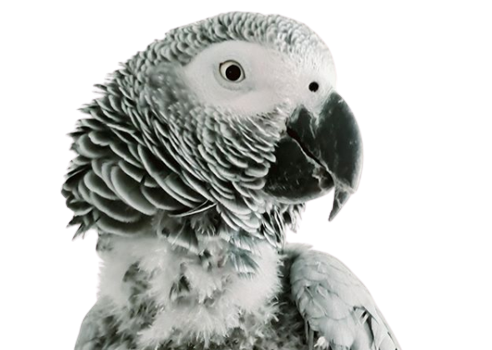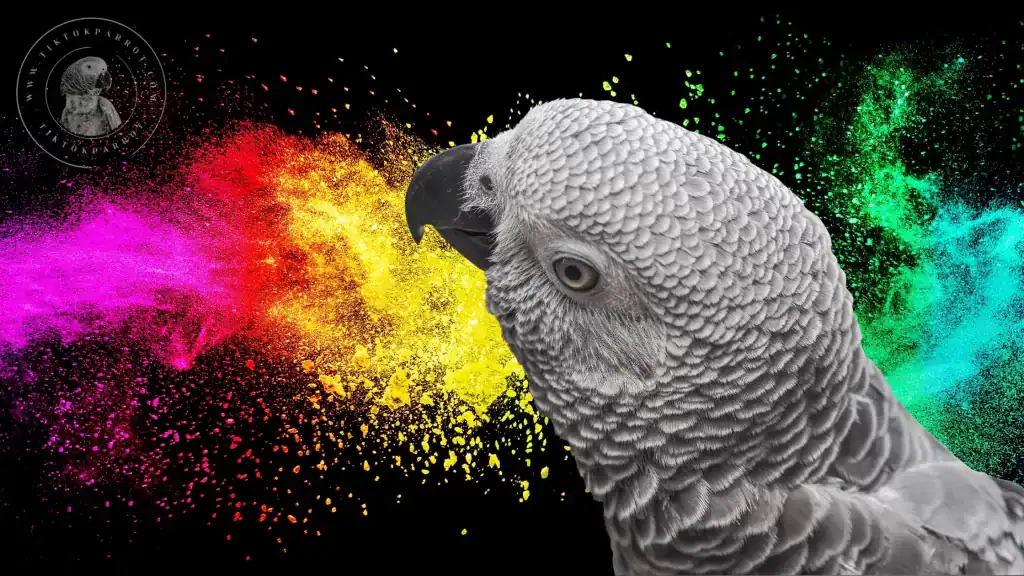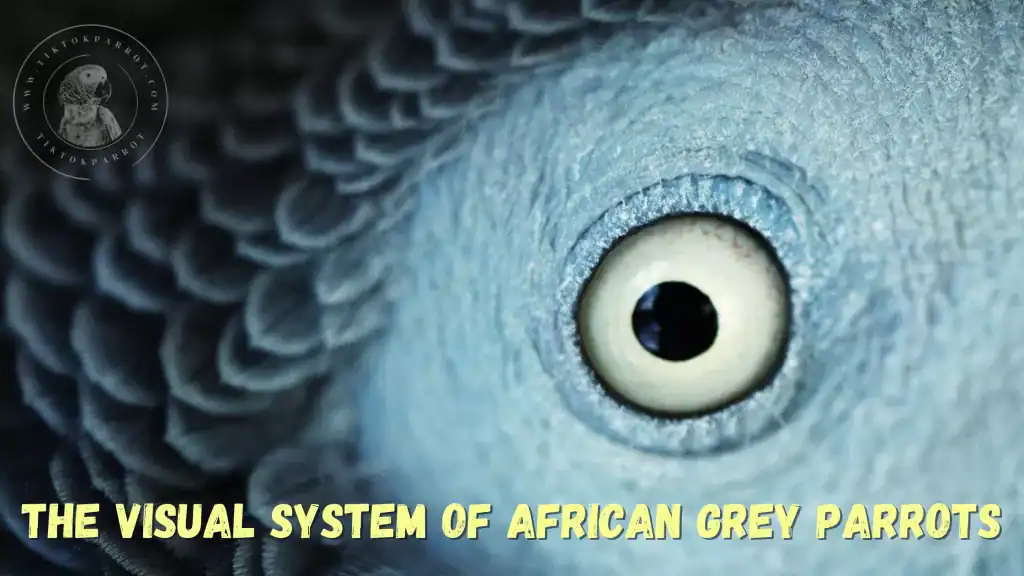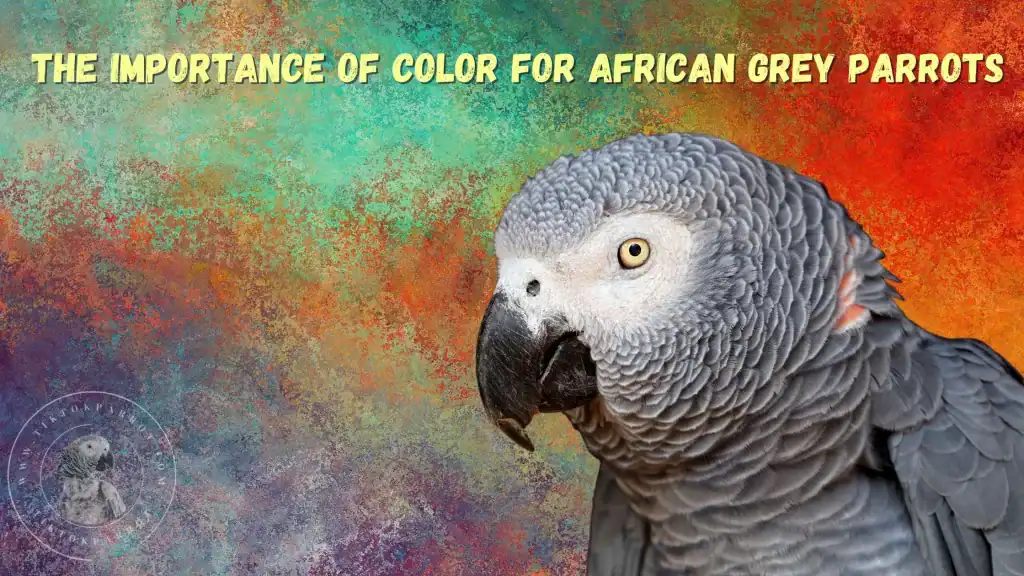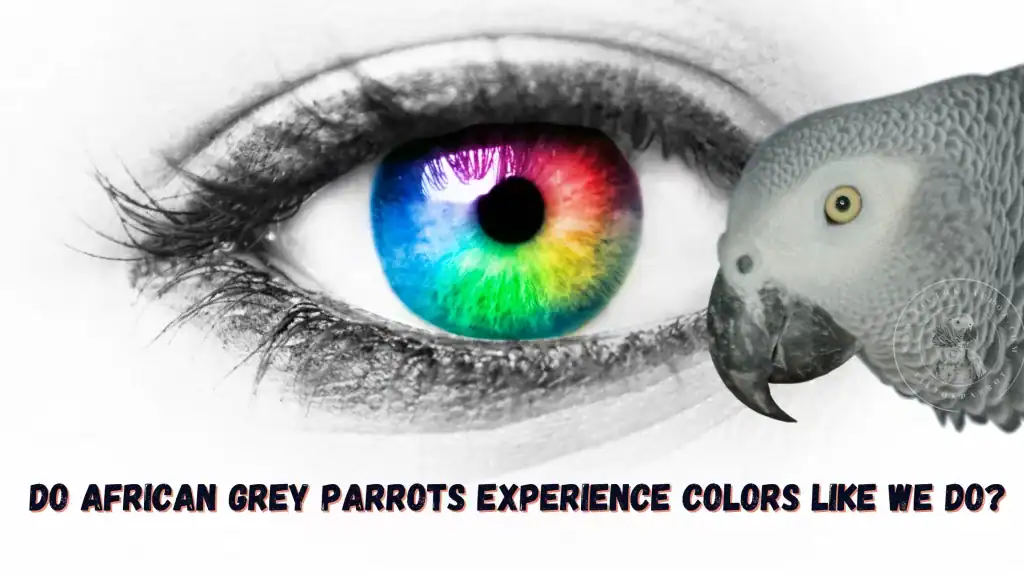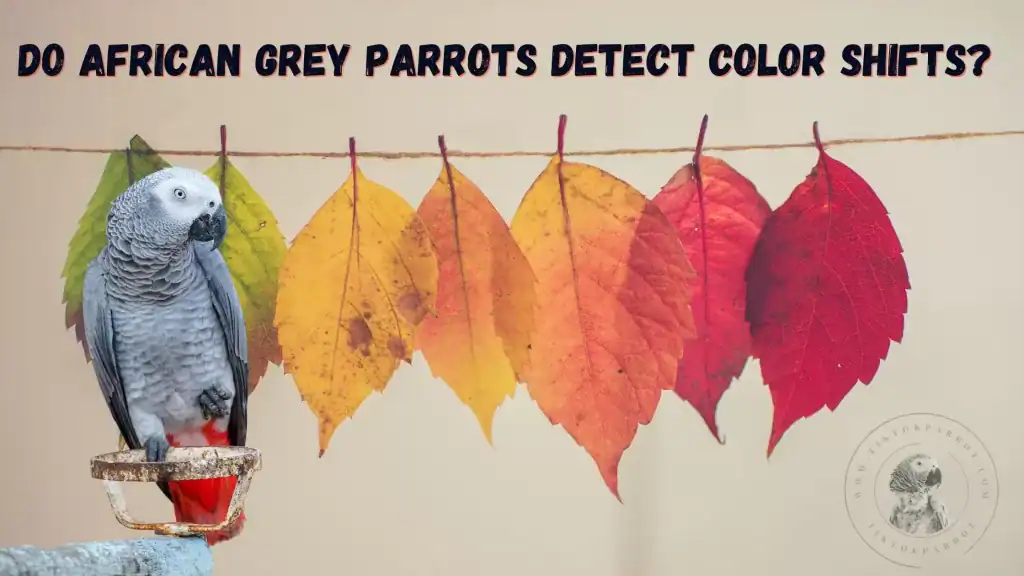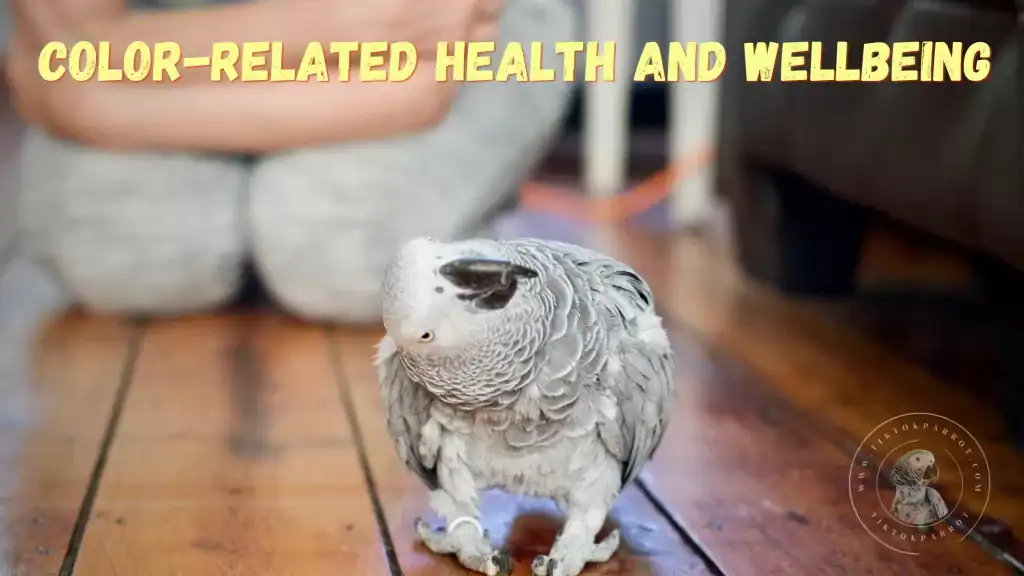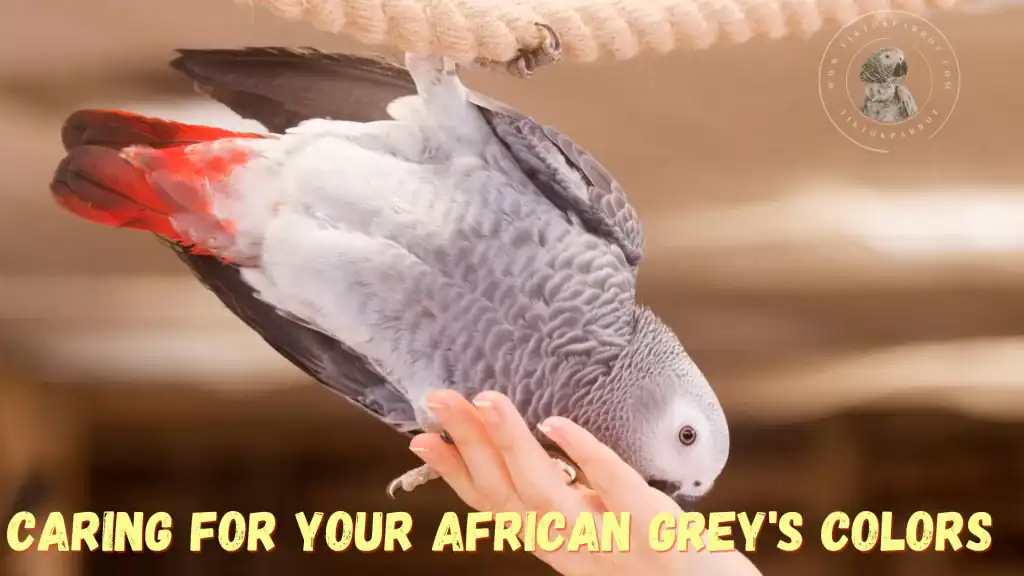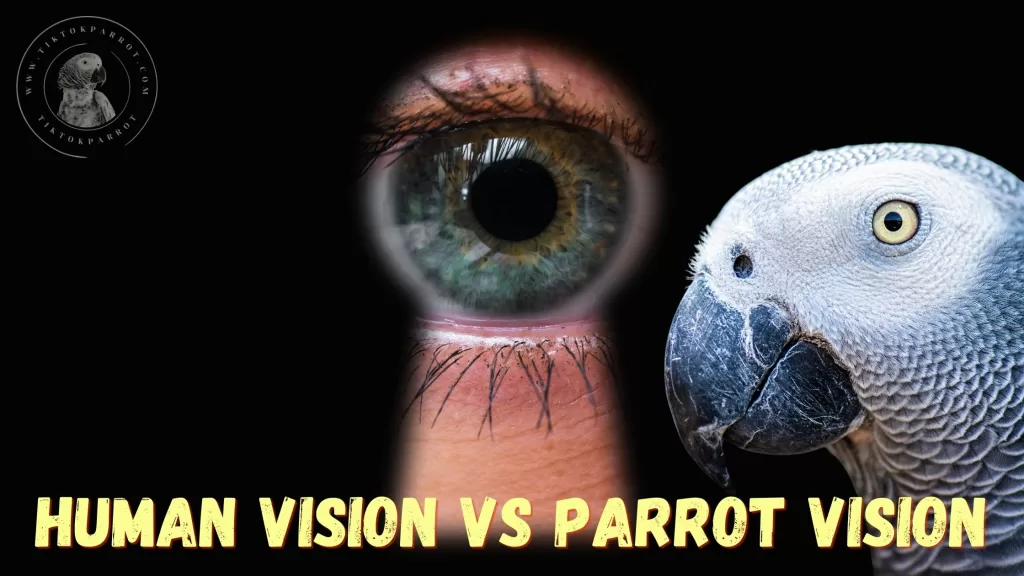The world of birds is filled with diverse and colorful species, each with their own unique characteristics. Among them, African grey parrots are particularly known for their intelligence and advanced cognitive abilities. But do these parrots have the ability to see color? This article aims to answer this question by delving into the visual system of grey parrots and exploring how color plays a role in their lives.
Table of Contents
Discover the fascinating world of African Grey parrots’ color vision, their unique tetrachromatic capabilities, and how color plays a vital role in their lives. Learn more about these intelligent birds and their incredible visual system.
Step into the hidden chromatic world of African grey parrots, where vivid colors beyond human perception shape their lives. Explore the secrets of their extraordinary tetrachromatic vision and uncover how these vibrant hues influence their intelligence, behavior, and communication.
The Visual System of African Grey Parrots
One of the most fascinating things about these birds is how they see the world. Grey parrots can see a range of colors beyond the human perception, which makes their world much more colorful and complex than we ever imagined.
The Anatomy of a Parrot’s Eye
The eyes of African grey parrots are specially adapted to allow them to see a wider range of colors. Their eyes contain four types of color receptors, while humans only have three. This extra receptor allows grey parrots to see ultraviolet light, which is invisible to humans. They can also see colors that appear much dimmer to us, such as the subtle variations in shades of grey.
Retina
A parrot’s eye is a complex organ that allows them to perceive their environment, including detecting colors. The retina is the light-sensitive layer at the back of the eye, containing photoreceptor cells responsible for detecting light and transmitting signals to the brain.
Cone Cells
Photoreceptor cells include rods, responsible for detecting light in low-light conditions, and cones, responsible for detecting color. Cone cells contain pigments that absorb specific wavelengths of light, allowing the bird to perceive colors.
Color Perception in African Grey Parrots
The way African grey parrots perceive color is different from humans. For example, they can distinguish between different shades of red and green that look identical to us. They can also see colors in low light conditions that appear grey to us. This ability is particularly useful for these birds in the wild, as it allows them to spot prey and predators in low light conditions.
The Impact of Color Perception
The ability of African greys to see a wider range of colors has a significant impact on their behavior. For example, they are known to be attracted to bright and colorful objects, and they use color to communicate with each other. They also use color to navigate their environment, such as using the color of fruit to determine its ripeness.
Tetrachromatic Vision
Unlike humans, who have trichromatic vision with three types of cone cells, African grey parrots possess tetrachromatic vision, with four types of cone cells. This enables them to perceive a wider range of colors, including ultraviolet light. The additional color dimension provides African Greys with enhanced color discrimination capabilities, allowing them to perceive subtle differences in hues that humans cannot detect.
Color Discrimination and Communication
African grey parrots can use their advanced color perception to discriminate between various objects and communicate with each other. Their ability to detect subtle differences in color can be crucial for survival, as it enables them to identify threats and find resources.
The Importance of Color for African Grey Parrots
Mate Selection
Color plays a vital role in mate selection among grey parrots. The brightness of their feathers can be an indication of an individual’s health and genetic fitness. Males with brighter red tails are often more attractive to females, as they are likely to produce healthier offspring.
A healthy, vibrant plumage is a sign of a strong, fit partner, and parrots with brighter, more vivid colors are often preferred by potential mates.
Visual communication
Color plays a vital role in the lives of African grey parrots. Their colors serve as a means of communication, allowing them to convey information to other members of their species. For example, their bright red tails can be seen from a distance and are often used to signal their presence to other parrots.
Foraging and Food Recognition
African Greys use their advanced color vision to locate and recognize food sources in their environment. They can identify ripe fruits and vegetables by their color, which helps them to efficiently forage for the most nutritious options available.
Camouflage
The grey color of their bodies provides them with excellent camouflage in the forests they inhabit. This natural camouflage helps them avoid predators and blend in with their surroundings while they forage for food.
Do African Grey Parrots Experience Colors Like We Do?
Yes, African grey parrots can see color like humans, but their color vision is even more advanced than ours. These parrots, like most birds, have tetrachromatic vision, which means they possess four types of cone cells in their eyes. In contrast, humans have trichromatic vision, with only three types of cone cells.
The additional cone cell in African Greys allows them to see a broader range of colors and to distinguish between more subtle color variations. This extra color sensitivity may play a significant role in their ability to forage for food, find mates, and navigate their environment.
Furthermore, birds can perceive ultraviolet (UV) light, which is invisible to humans. This ability provides them with an even more extensive range of color perception, enabling them to see patterns and markings on plants, animals, and even other birds that are not detectable by humans.
So, not only can grey parrots see color like humans, but their color vision is more sophisticated, allowing them to perceive a wider range of colors and detect subtle differences that we cannot see.
Do African Grey Parrots Detect Color Shifts?
Yes, African grey parrots can see color changes. Their advanced color vision, as mentioned earlier, allows them to perceive a wide range of colors, including subtle variations that may not be visible to humans. This capability helps them to adapt to their environment and to identify important visual cues related to food, mates, or potential threats.
For instance, grey parrots can detect the color change in ripening fruits, which helps them determine which fruits are ready to eat. They can also perceive color changes related to mating displays or warning signals in other birds, which may contribute to their ability to communicate and interact with their surroundings.
In summary, African grey parrots’ tetrachromatic vision and their ability to perceive ultraviolet light enable them to see color changes effectively, giving them an advantage in various aspects of their lives.
Color-Related Health and Wellbeing
Feather health
The color and condition of an African grey’s feathers can indicate its overall health. Dull, discolored, or damaged feathers may be a sign of illness, poor nutrition, or stress.
Stress indicators
Feather plucking and discoloration can be signs of stress in parrots. If your African Grey is experiencing stress, it is crucial to address the underlying cause and provide a comfortable and stimulating environment.
Diet and nutrition
A balanced, nutritious diet is essential for maintaining your African Grey’s vibrant colors. A diet lacking in essential nutrients can lead to dull, lackluster feathers.
Caring for Your African Grey’s Colors
Proper diet
A well-balanced diet that includes a variety of fruits, vegetables, and high-quality pellets will help keep your parrot’s colors bright and healthy.
Grooming and hygiene
Regular grooming and bathing are essential for maintaining the health and appearance of your African grey’s feathers. Providing a shallow dish for your parrot to bathe in or misting them with water will help remove dirt and debris and keep their feathers in top condition.
Environmental enrichment
A stimulating environment that encourages mental and physical activity is crucial for maintaining the wellbeing of your African grey parrot. Toys, perches, and foraging opportunities can help keep your parrot’s mind and body healthy, which in turn will help maintain their beautiful colors.
Human Vision VS Parrot Vision: Comparisons
- Color Perception: Parrots, including African greys, have tetrachromatic vision, meaning they possess four types of cone cells in their eyes. Humans, on the other hand, have trichromatic vision with three types of cone cells. Parrots can see a wider range of colors and detect more subtle variations compared to humans.
- Ultraviolet (UV) Light Sensitivity: Parrots are capable of perceiving ultraviolet (UV) light, which is invisible to humans. This ability allows them to see patterns and markings on plants, animals, and other birds that are not detectable by humans. This expanded range of vision helps parrots navigate their environment, find food, and identify potential mates.
- Visual Acuity: Birds, including parrots, typically have higher visual acuity than humans. This means that they can see finer details from a distance. This ability helps them spot predators and prey from afar, as well as identify other birds and objects in their environment.
- Field of View: Parrots have a wider field of view than humans due to the placement of their eyes on the sides of their head. This positioning allows them to see almost 360 degrees around them, providing an advantage in detecting potential threats and keeping track of their surroundings.
- Motion Detection: Birds, including parrots, are generally better at detecting motion than humans. Their higher flicker fusion frequency allows them to perceive rapid movement, which can be crucial for avoiding predators and capturing prey.
- Adaptation to Light Conditions: Parrots can quickly adapt to different lighting conditions. They can adjust the size of their pupil more rapidly than humans, enabling them to see well in bright sunlight and dimmer environments. This flexibility allows them to thrive in various habitats, from dense forests to open savannahs.
In summary, parrot vision differs from human vision in several aspects, including color perception, UV light sensitivity, visual acuity, field of view, motion detection, and adaptation to light conditions. These differences provide parrots with unique advantages in their natural environments.
The Future of Research
Despite our growing understanding of African grey parrots, there is still much to learn about their perception of color. Ongoing research is examining the neural pathways involved in color perception in these birds, as well as investigating how they use color in communication and navigation.
My Final Thoughts
In conclusion, African grey parrots have remarkable color vision, which plays a critical role in their daily lives, from mate selection to foraging for food. Their tetrachromatic vision allows them to perceive a wider range of colors than humans, providing them with a unique perspective on the world around them.
So, we can say African greys are truly remarkable creatures with a unique view of the world. Their ability to see a wider range of colors than humans opens up a world of possibilities for understanding their behavior and cognition. As we continue to learn more about these fascinating birds, we will undoubtedly uncover new mysteries and marvels of the natural world.
FAQs (frequently asked questions)
Q: Do African Grey Parrots see color?
A: Yes, African grey parrots have advanced color vision, allowing them to perceive a wide range of colors, including ultraviolet light, thanks to their tetrachromatic vision.
Q: Can African Grey parrots see more colors than humans?
A: Yes, African grey parrots have an extra color receptor in their eyes, allowing them to see a wider range of colors than humans, including ultraviolet light.
Q: How does the ability to see more colors impact African Grey parrots’ behavior?
A: African grey parrots use color to communicate with each other, navigate their environment, and locate prey and predators. They are also attracted to bright and colorful objects.
Q: Is there ongoing research into African Grey parrots’ color perception?
A: Yes, ongoing research is examining the neural pathways involved in color perception in African grey parrots, as well as investigating how they use color in communication and navigation.
Q: How do African Grey parrots use color in communication?
A: African Grey parrots use color to signal aggression, attract mates, and communicate information about food sources and threats.
Q: What other remarkable abilities do African Grey parrots have?
A: African grey parrots are known for their exceptional mimicry skills, problem-solving abilities, and memory. They are also one of the most intelligent birds in the world.
Q: What is tetrachromatic vision?
A: Tetrachromatic vision refers to the presence of four types of cone cells in the retina, allowing an organism to perceive a wider range of colors, including ultraviolet light. Grey parrots possess tetrachromatic vision, which gives them an enhanced ability to discriminate between subtle differences in hues.
Q: How does color vision help African Grey Parrots in mate selection?
A: Color vision plays a crucial role in mate selection among African greys. Brighter and more vibrant feathers can indicate an individual’s health and genetic fitness. Males with brighter red tails are often more attractive to females, as they are likely to produce healthier offspring.
Q: How do African Grey Parrots use color vision for foraging and food recognition?
A: African grey parrots use their advanced color vision to locate and recognize food sources in their environment. They can identify ripe fruits and vegetables by their color, which helps them to efficiently forage for the most nutritious options available.
Q: Can African Grey Parrots see ultraviolet light?
A: Yes, African grey parrots can perceive ultraviolet light due to their tetrachromatic vision. This additional color dimension provides them with enhanced color discrimination capabilities and a unique perspective on the world around them.
Q: How does an African Grey Parrot’s color vision differ from that of humans?
A: African grey parrots have tetrachromatic vision, which means they possess four types of cone cells in their retina. This allows them to see a wider range of colors, including ultraviolet light, and perceive subtle differences in hues that humans cannot detect. Humans, on the other hand, have trichromatic vision with only three types of cone cells.
Q: What role does color play in the social behavior of African Grey Parrots?
A: Color plays a significant role in the social behavior of African grey parrots, particularly in mate selection and communication. Brighter feather colors can indicate health and genetic fitness, and parrots use their advanced color vision to assess potential mates. Additionally, their ability to detect subtle color differences can be crucial for conveying information and recognizing individual birds.
Q: Can African Grey Parrots see in low-light conditions?
A: Yes, African grey parrots can see in low-light conditions. Their eyes contain rod cells, which are photoreceptors specialized for detecting light in dim environments. While their color vision might not be as effective in low light, their rod cells allow them to navigate and function in darker surroundings.
Q: How does color vision benefit African Grey Parrots in the wild?
A: In the wild, color vision provides African grey parrots with several advantages. Their ability to perceive a wide range of colors helps them locate food sources, recognize potential threats, identify suitable mates, and communicate with other members of their species.
Q: Are African Grey Parrots unique among birds in their color vision capabilities?
A: While African grey parrots have advanced color vision, they are not unique among birds in this regard. Many bird species possess tetrachromatic vision, which allows them to see a wider range of colors, including ultraviolet light. This enhanced color perception is a common adaptation among birds, aiding in various aspects of their lives, from foraging to social interactions.
Q: Can African Grey Parrots recognize colors in human speech?
A: Yes, African grey parrots can learn to associate specific colors with human speech, as they are known for their advanced cognitive abilities and capacity to mimic sounds, including human language. When trained, they can identify and respond to color-related cues and commands.
Q: Does the color vision of African Grey Parrots change as they age?
A: While there is limited research on this topic, it is possible that an African grey parrot’s color vision could deteriorate with age, as is the case with many animals, including humans. However, more research is needed to determine the extent of age-related changes in their color vision.
Q: How can I provide a color-rich environment for my pet African Grey Parrot?
A: To create a stimulating environment for your pet African Grey, you can provide colorful toys, perches, and cage accessories. Ensuring a variety of colors, textures, and materials will help keep your parrot engaged and mentally stimulated. Additionally, offering a diverse diet of colorful fruits and vegetables can promote both physical health and color recognition.
Q: Are there any differences in color vision between male and female African Grey Parrots?
A: There is no evidence to suggest that there are significant differences in color vision between male and female African grey parrots. Both sexes possess tetrachromatic vision, enabling them to perceive a wide range of colors.
Q: Can African Grey Parrots see color in darkness?
A: In complete darkness, African grey parrots, like other animals, cannot see color. In low-light conditions, their vision relies more on rod cells, which are sensitive to light but not color. Color perception is limited in low-light environments.
Q: How do African Grey Parrots perceive colors differently from other parrot species?
A: While many parrot species have tetrachromatic vision, there may be subtle differences in the specific wavelengths of light that different species can detect. More research is needed to determine the exact differences in color perception between African grey parrots and other parrot species.
Q: Do the colors of an African Grey Parrot’s feathers serve any purpose besides mate selection?
A: While the primary function of an African grey parrot’s feather colors is mate selection, these colors may also help the birds blend into their natural environment, providing some level of camouflage from predators.
Q: How does an African Grey Parrot’s color vision compare to other animals?
A: African grey parrots, like many other birds, have tetrachromatic vision, which allows them to perceive a wider range of colors than humans and many other mammals. Some animals, such as certain reptiles and fish, may also have tetrachromatic vision or even more advanced color perception.
Q: Do all African Grey Parrots have the same color vision capabilities?
A: While there may be some individual variation in color vision capabilities among African grey parrots, they generally possess tetrachromatic vision, which allows them to perceive a wide range of colors. Factors such as age, health, and genetic variations can potentially influence individual color vision capabilities.
Q: Can African Grey Parrots’ color vision be tested or measured?
A: Yes, researchers can assess the color vision capabilities of African grey parrots through various behavioral tests and experiments. By presenting the birds with color discrimination tasks and observing their responses, scientists can gain insights into their visual perception and color recognition abilities.
Q: Can environmental factors influence the color vision of African Grey Parrots?
A: Environmental factors such as exposure to natural light and the availability of colorful stimuli in their surroundings can potentially influence the development and maintenance of an African grey parrot’s color vision. Providing your pet parrot with ample access to natural light and a color-rich environment can help ensure optimal visual health.
Q: Are there any known color vision disorders in African Grey Parrots?
A: While there is limited research on color vision disorders specific to African grey parrots, it is possible that, like other animals, they could experience vision issues due to genetic factors, disease, or injury. If you suspect your parrot may have a vision problem, consult with an avian veterinarian for a professional assessment.
Q: How does the color vision of African Grey Parrots impact their ability to recognize human faces?
A: The ability of African grey parrots to recognize human faces is not solely based on color vision but rather a combination of factors, including shape, size, and facial features. Their advanced cognitive abilities and color vision may contribute to their capacity to distinguish between different people, but more research is needed to fully understand the role of color in this process.
Q: Do African Grey Parrots use color to communicate emotions or social status?
A: While African grey parrots primarily use vocalizations and body language to communicate, their advanced color vision may play a role in social interactions by allowing them to recognize individual birds and assess mate quality. There is no direct evidence to suggest that they use color to communicate emotions or social status, but more research is needed to explore the full range of their visual communication abilities.
Q: Can the color vision of African Grey Parrots be enhanced through training or environmental modifications?
A: While there is no direct method to enhance the innate color vision capabilities of African grey parrots, providing a stimulating environment with a variety of colorful objects and access to natural light can help maintain their visual health. Training that incorporates color recognition tasks can also help your parrot develop its cognitive skills and color discrimination abilities.
If you found this blog helpful, It would be great if you could share it with your family and friends who might find it useful as well.
You might like to read these as well
The Secret Life of African Grey Parrots: What You Need to Know Before Owning One
Understanding of Grey Parrot’s Body Language
The Surprising Benefits of Owning an African Grey Parrot
Is Your African Grey a Jealous Bird? Here’s What You Need to Know!
African Grey Parrot Male or Female? (Determine Gender of African Grey)
The Mesmerizing Eyes of African Grey Parrot & What They Can Tell
African Grey Parrots: The Ultimate Guide to Care and Training
Unlock the Secrets of Choosing the Perfect African Grey Parrot
The Importance of a Cage for Your African Grey Parrot
The Battle of the Birds: African Grey Parrot vs Macaw
Winning Parrot Names: How to Choose a Name That Strengthens Your Bond
For more useful content about African grey parrots, you can subscribe my site with your email to get notification upon publishing a new blog, the subscribe box you can see on the right side of this page. Also if you get an alert on your web browser while browsing my site, allow it and that will also give you an alert whenever I publish a new blog.
Stay safe and much love !


